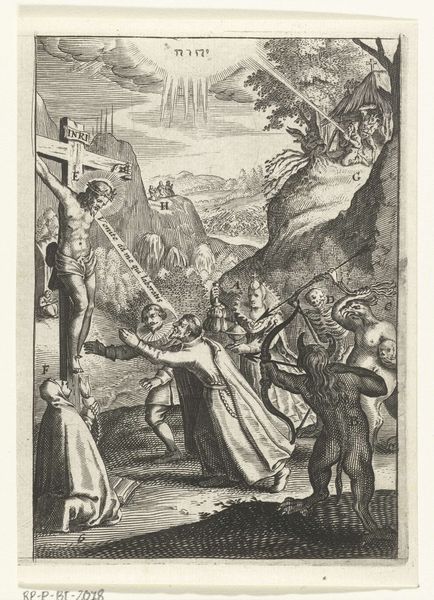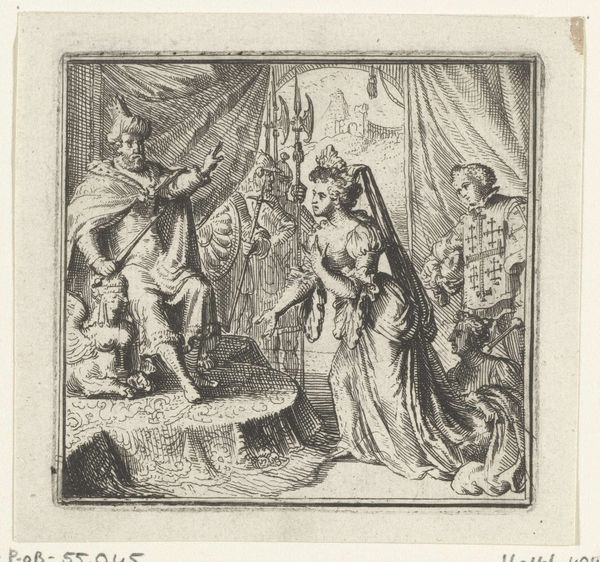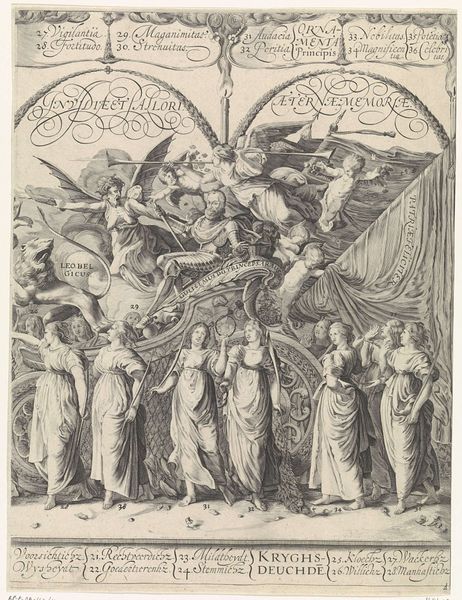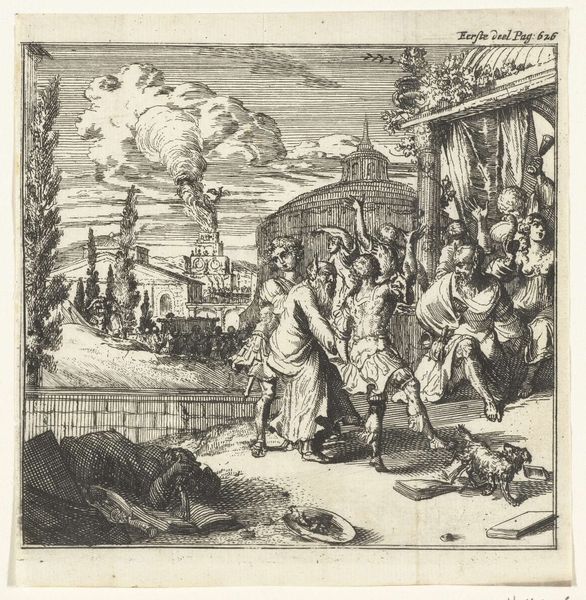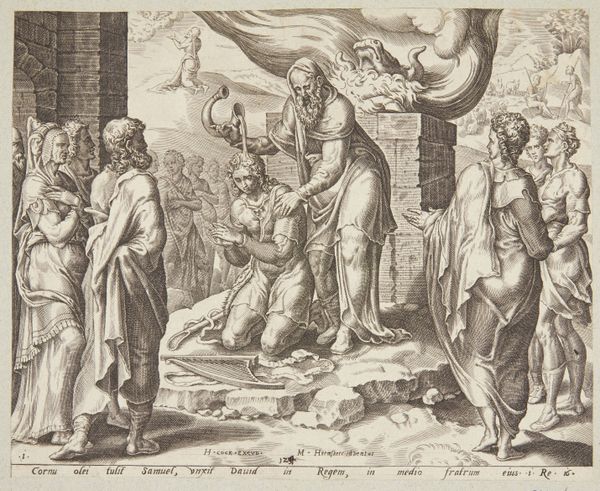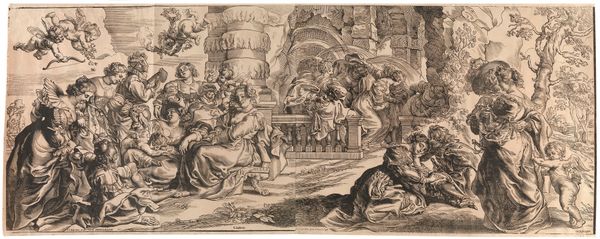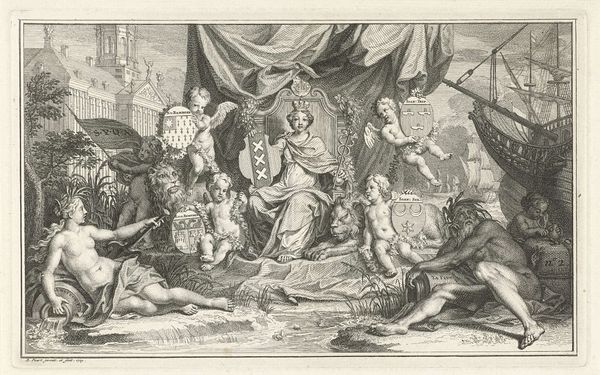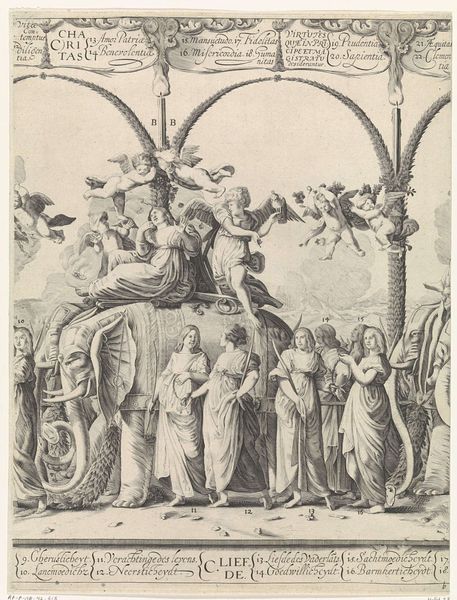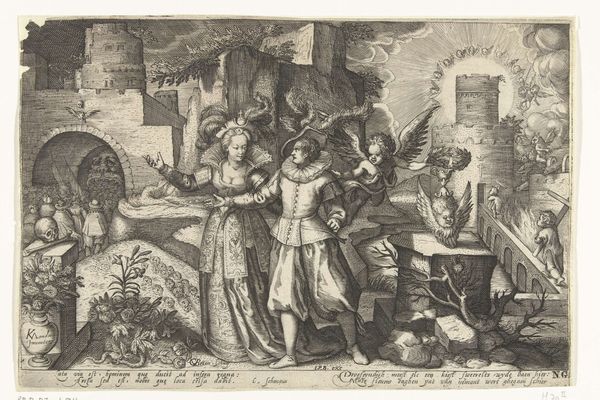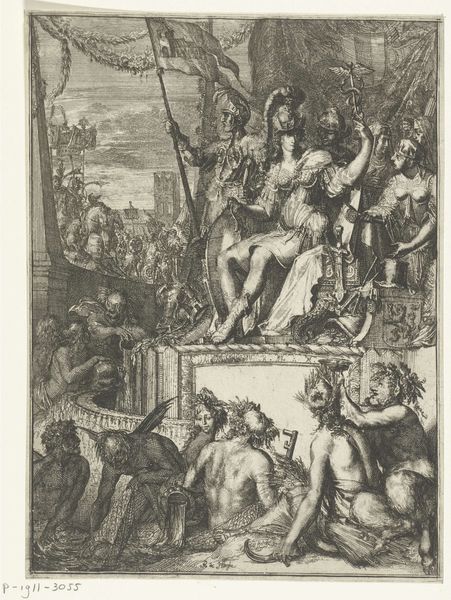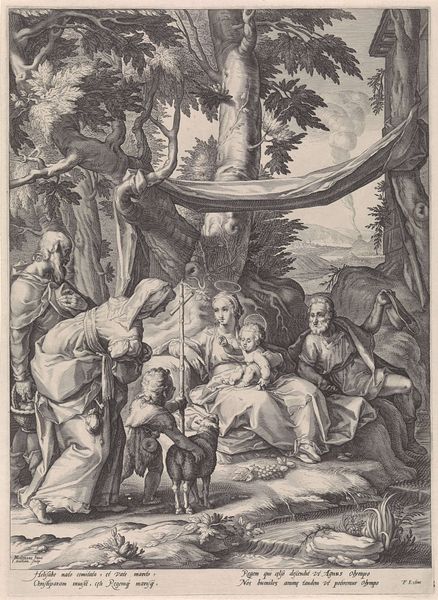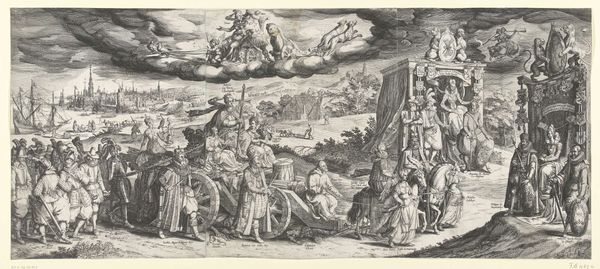
drawing, print, graphite
#
portrait
#
drawing
# print
#
figuration
#
line
#
graphite
#
surrealism
Dimensions: Image: 285 x 395 mm Sheet: 380 x 480 mm
Copyright: National Gallery of Art: CC0 1.0
Curator: Here, we have Herman Graff’s "Surreal Play 2," created in 1950. It’s a graphite drawing, presented as a print. Editor: My first thought is "melancholy." There’s something quietly haunting about the composition, like stumbling into a dream where all the props are slightly…off. The textures, created with such delicate line work, deepen that feeling. Curator: The drawing style aligns with surrealism's broader impact, influenced heavily by psychoanalysis, of course. One cannot consider surrealist art devoid of exploring unconscious desires or fears. It can certainly be argued here, particularly by looking at this particular image and thinking about Graff’s role within the war generation in postwar Germany, as indicative of anxiety, existential angst, and feelings of alienation. Editor: I see that, definitely the figures, almost ghostly and obscured among scattered objects – fragments of art, perhaps remnants of a past existence. The muted tones and soft lines amplify a sense of faded memory. It reminds me of childhood homes when you pass by; how you once knew them so well, now distorted as hazy images of who and what used to be there. Curator: Right, these themes intersect interestingly, when viewed with an artist's experience post-traumatic events: The artwork certainly embodies personal feelings regarding political and existential changes. This surreal atmosphere can be linked with broader cultural anxiety surrounding the construction of a renewed German identity, as one possible argument among many others. Editor: I love the interpretation of these sociopolitical dimensions within such a profoundly subjective depiction of interior spaces. Graff gives the feeling that nothing can ever be fixed as opposed to being solved – a sort of beautiful but unsolvable melancholic chaos! Curator: Indeed, the "play" of the title may allude to the performative and unstable nature of identity within shifting cultural contexts, perhaps particularly resonant for queer viewers of his artwork given what has historically been perceived as a pressure to mask any deviation. It seems very pertinent in the 1950s considering postwar anxieties related to sexual identity and non-normative orientations. Editor: Absolutely, bringing a wealth of nuanced social commentary as such enriches our reading of it—all while leaving the imagination wonderfully free! So now looking one more time I feel sadness but hope too for transformation from decay - fascinating... Curator: Exactly, and with a critical focus on identity formation, viewers can further perceive deeper contextual relevance across time!
Comments
No comments
Be the first to comment and join the conversation on the ultimate creative platform.
